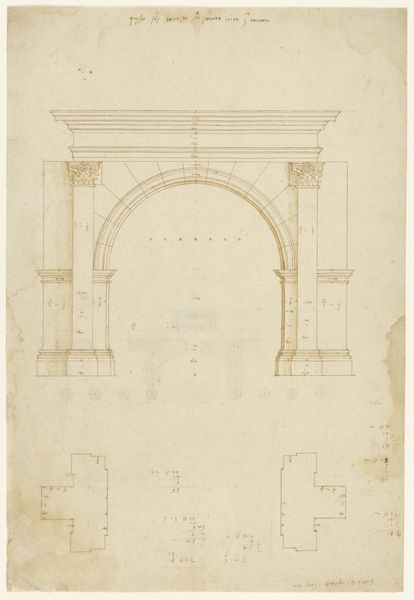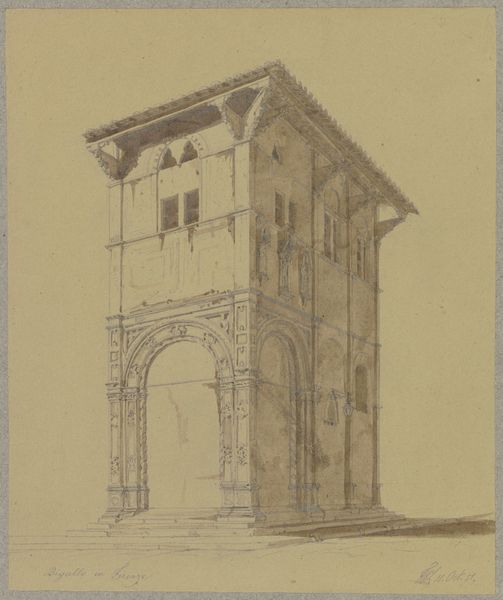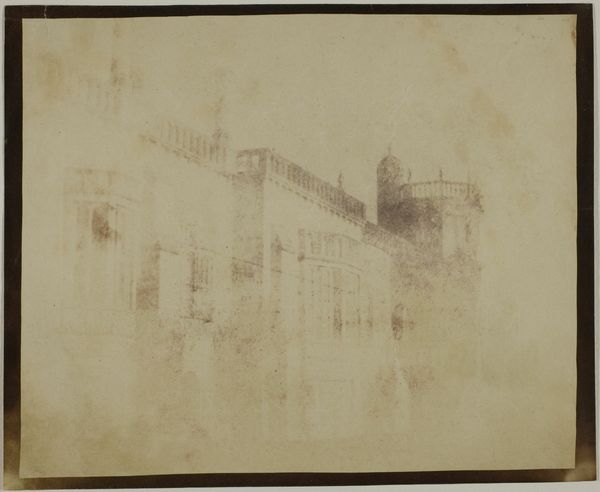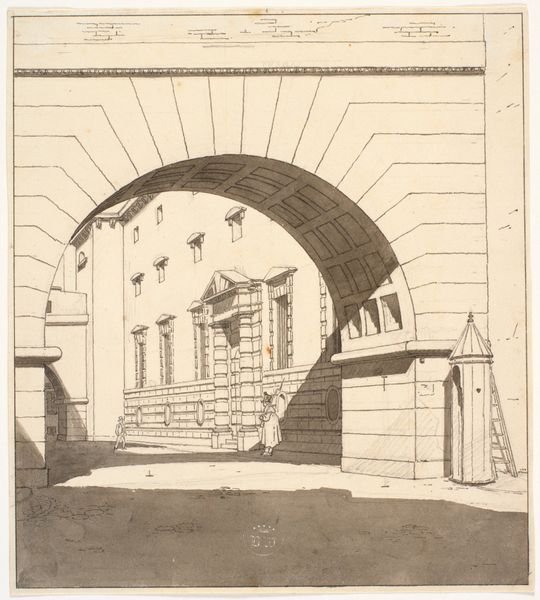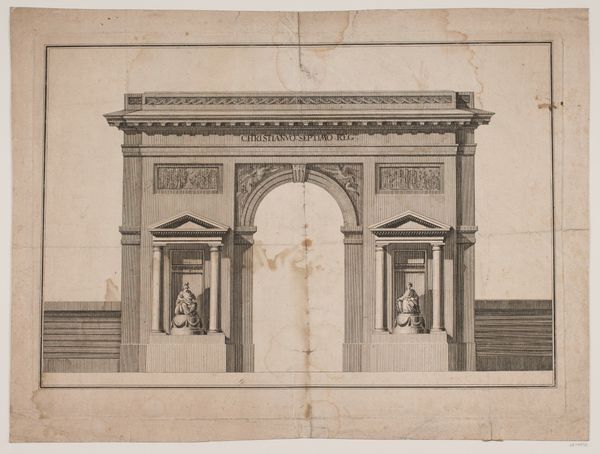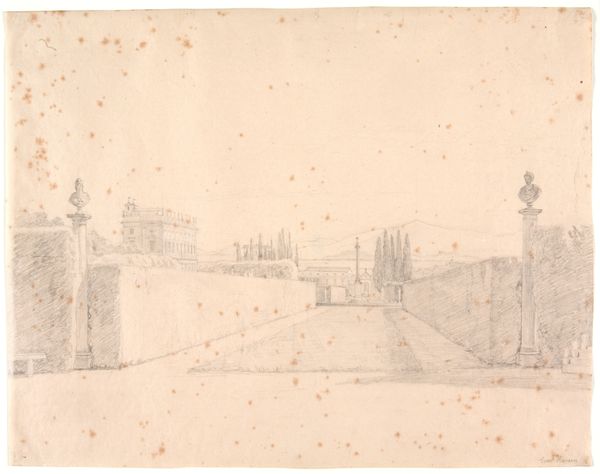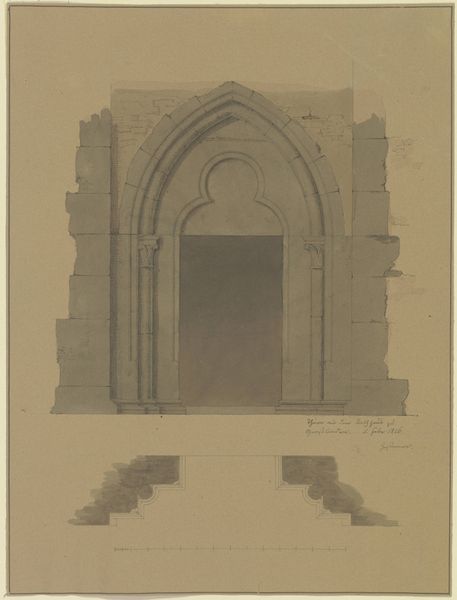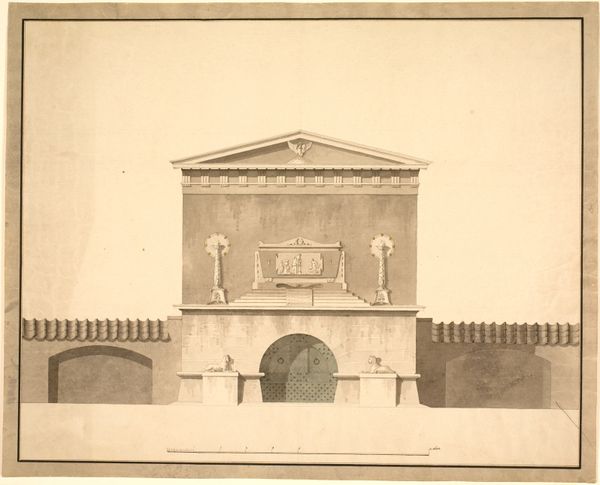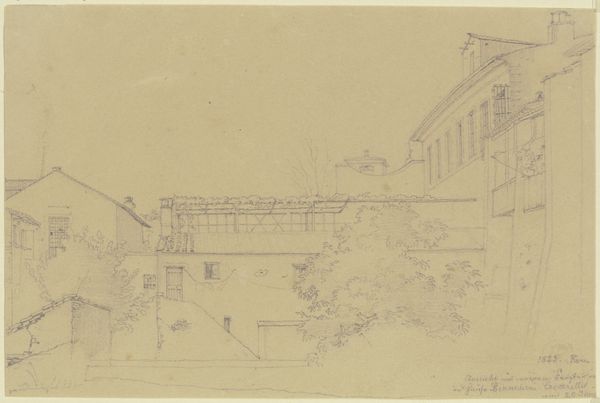
Der Ponte alle Grazie in Florenz, vom Ponto Vecchio aus gesehen 16 - 1851
0:00
0:00
Copyright: Public Domain
Editor: This is Friedrich Wilhelm Ludwig’s pencil drawing, "Der Ponte alle Grazie in Florenz, vom Ponto Vecchio aus gesehen," created sometime between 1816 and 1851. The detailed lines create such a captivating depth, and the composition—with the arch framing the cityscape—draws you right into the scene. What formal elements stand out to you most in this work? Curator: The linear perspective is meticulously rendered, guiding the eye towards the vanishing point within the cityscape. Observe the contrast between the strong vertical lines of the columns framing the view and the delicate, almost ethereal, treatment of the distant buildings. This juxtaposition creates a tension between the immediate, tangible architecture and the receding, less defined cityscape. Consider how the artist uses the texture of the pencil strokes to define form and spatial relationships. Editor: I see that now! The sharp lines in the foreground contrast so dramatically with the softer treatment of the city beyond. How does that influence the composition? Curator: It serves to emphasize the structure and solidity of the immediate architectural elements, almost creating a stage-like effect for the cityscape backdrop. The use of the arch also functions as a framing device, drawing attention to the receding planes of the cityscape and focusing our gaze on the Ponte alle Grazie itself. Have you considered how the limited tonal range contributes to the overall mood? Editor: It definitely evokes a sense of quiet contemplation. The monochromatic palette and the artist’s focus on line and form definitely remove any sense of dramatic spectacle. Curator: Precisely. It becomes an exercise in pure visuality, divorced from excessive emotionality. It allows us to analyze the formal arrangement of space and structure. Editor: This has truly altered how I understand this piece, transforming it from a representational cityscape to a careful study of line, form, and spatial composition. Thanks so much for pointing that out! Curator: My pleasure! I will never look at it quite the same myself, from now on.
Comments
No comments
Be the first to comment and join the conversation on the ultimate creative platform.
